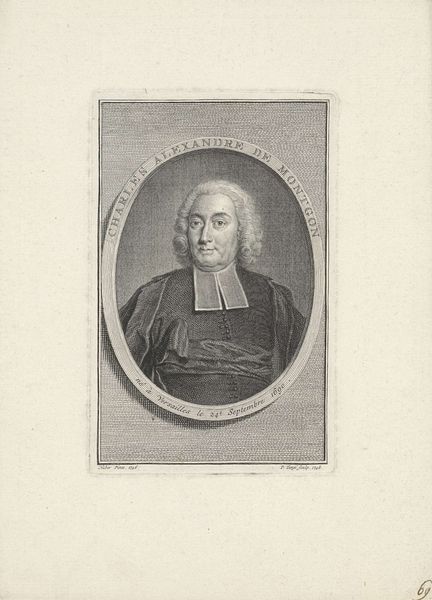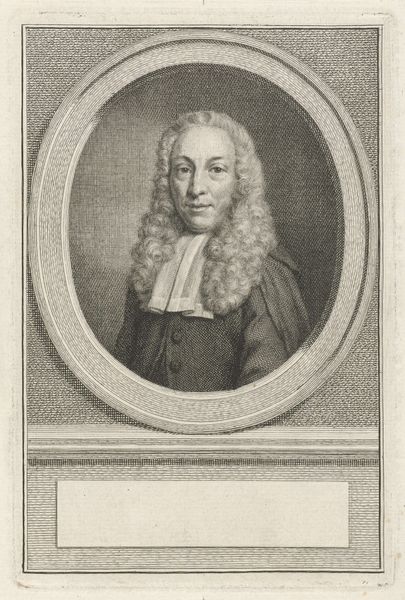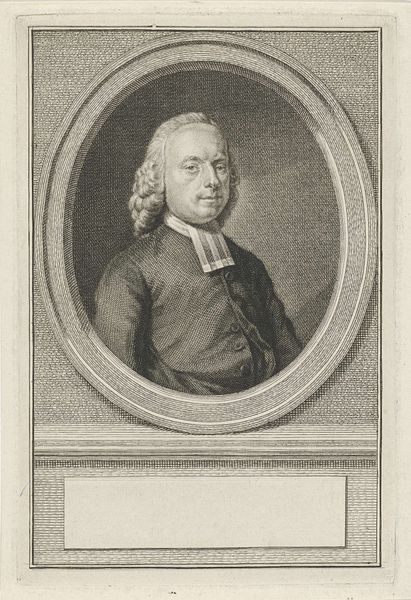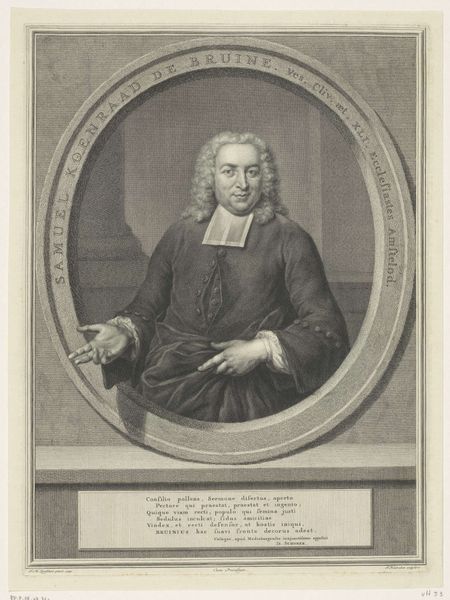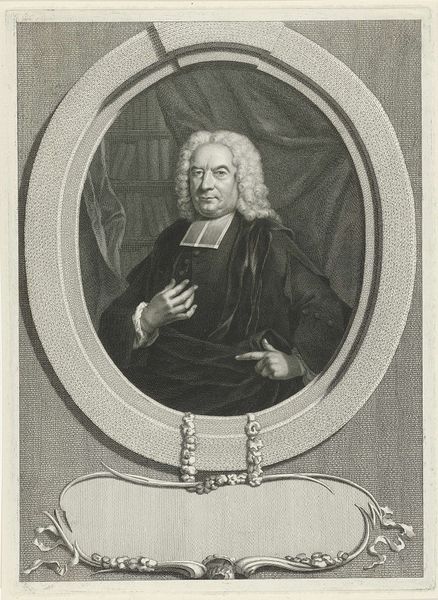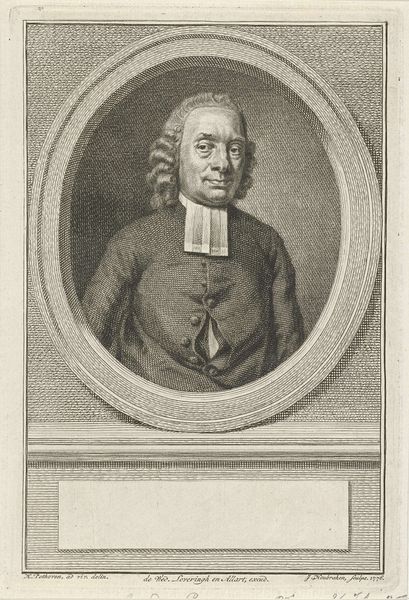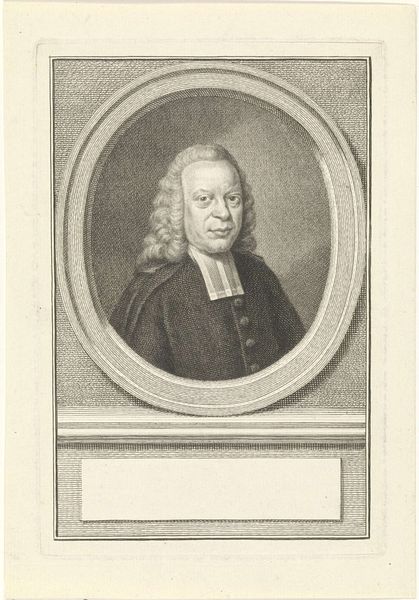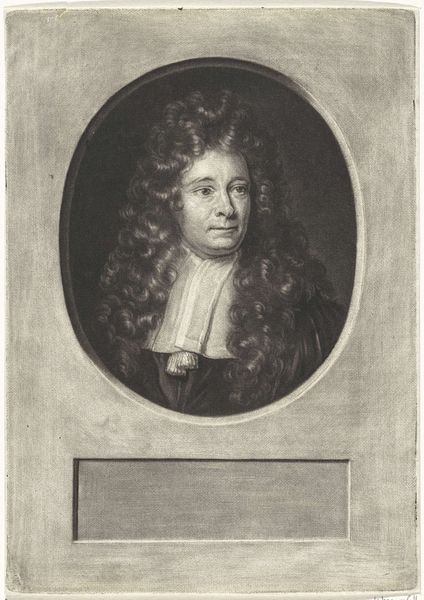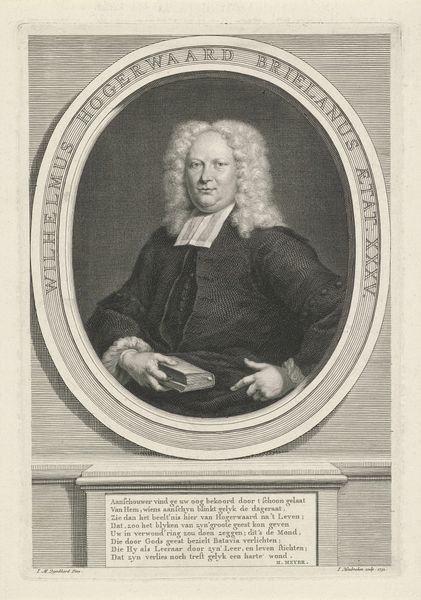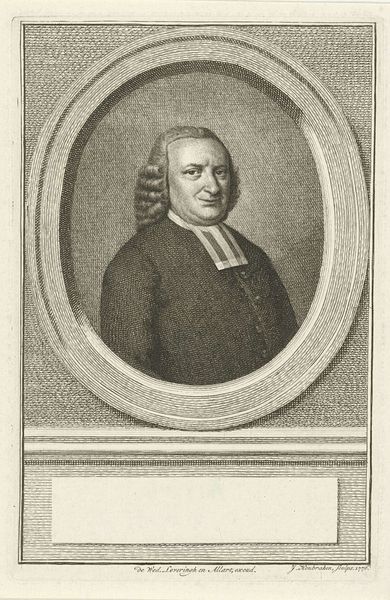
engraving
#
baroque
#
old engraving style
#
academic-art
#
engraving
Dimensions: height 174 mm, width 132 mm
Copyright: Rijks Museum: Open Domain
Curator: Before us is Jacob Houbraken's "Portret van Herman Schijn," an engraving from somewhere between 1727 and 1780. It's housed here at the Rijksmuseum. Editor: It's immediately striking—almost austere. The stark monochrome palette coupled with the rigid lines evokes a sense of serious contemplation. It seems to echo an elite and solemn class. Curator: Houbraken was, above all, a portraitist. He made many engravings and, especially in Amsterdam, reproduced them on a large scale. Looking at the subject, we must consider the limited perspectives of his era in the way artists reproduced an image of those of wealth and nobility. Herman Schijn himself would've commissioned or approved of the printing; consider how the material demands affected his decision-making about public persona and its perpetuation through engravings like these. Editor: You bring up such great considerations. For me, this reminds me of that point in art when prints became mass commodities. This form breaks away from individual artistic interpretations to become a social mirror; the print facilitates a kind of manufacturing of identity. Schijn, I feel, isn't just any man here, he is meant to embody, or materially represent, ideas tied to that period. His image would've had, essentially, wide distribution. What are your feelings? Curator: He may have commissioned Houbraken, in his social circles, to gain status, but also because printmaking during the baroque style provided accessibility to knowledge. Baroque often amplified emotion, sure, but think about who controlled which emotions, who even HAD a public emotional life! We need to see this print, not just as capturing Herman Schijn as an individual, but consider, even subtly, his position, relative freedoms, compared to others whose portraits wouldn't hang here. Editor: So the materiality of the engraving--its accessibility and reproducible form--actually underscores social and cultural power? Interesting, indeed, in how these images became tokens, and in today’s economy, might now circulate as a sign for collectors, galleries, and here in the Museum as the place it takes as one piece among others, now made invaluable. I never thought that something mass produced might convey these ideas so effectively. Curator: I agree; I see Schijn's gaze looking towards the present as much as representing a static past, even as the material form it's etched on speaks quietly to an elite control of art production. Editor: I’m really taken by its historical process and context now, and my view is nuanced.
